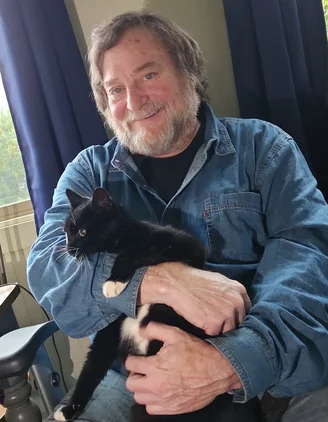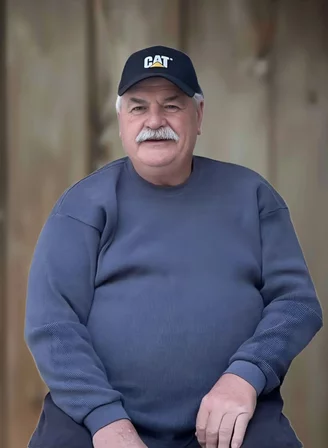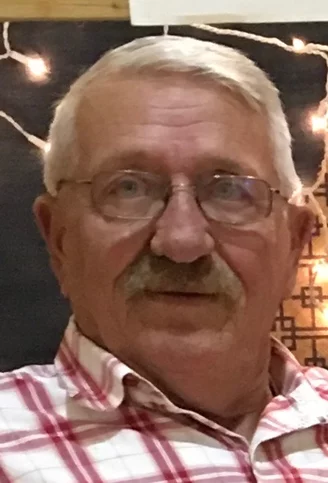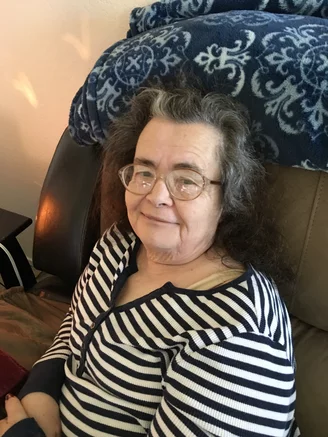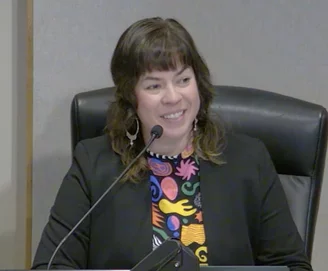Newsom Committed California to Making Its Own Insulin. It’s at Least a Year Behind His Schedule
Kristen Hwang / Wednesday, Jan. 15, 2025 @ 7 a.m. / Sacramento
Photo by Mykenzie Johnson on Unsplash
Gov. Gavin Newsom’s ambitious plan to produce a cheap, generic insulin for the 3.2 million Californians with diabetes is behind the schedule he announced and unlikely to make it to market for several years, industry experts say.
Civica, Inc., the nonprofit drug manufacturer contracted to produce insulin for California, has not started clinical trials or applied for approval from the federal Food and Drug Administration, both of which are likely to take more than a year to complete.
During his 2023 State of the State tour, Newsom announced California would begin selling insulin for $30 a vial with a “2024 delivery in terms of timeline,” pending FDA approval.
That target has come and gone.
Realistically, the state is at least one year away, if not more, multiple industry experts told CalMatters.
“You could be anywhere from 12 months to two or three years before you get your actual approval — and that’s if nothing goes wrong,” said James Bruno, a longtime chemical and pharmaceutical consultant for drug manufacturers.
A 2020 law aimed partially at bringing down insulin prices allowed Newsom to negotiate the 10-year, $50 million contract with Civica. Newsom earmarked an additional $50 to seed the construction of a drug manufacturing facility in California.
In the meantime, insulin prices have dropped nationally as a result of public pressure, the Biden administration’s 2023 cap on insulin prices for some seniors with Medicare, and changes to Medicaid rules that tied drug prices to inflation. At least 25 states and the District of Columbia have also implemented monthly co-pay caps to help offset continuing expenses for diabetics.
California is not one of those states. Newsom in October rejected a $35 monthly insulin copay cap. In his veto message, he cited the state’s $100 million investment in insulin production as an example of his administration’s efforts to reduce costs without a price cap.
The state’s effort to manufacture insulin is “getting at the underlying cost, which is the true sustainable solution to high-cost pharmaceuticals. With copay caps however, the long-term costs are still passed down to consumers through higher premiums from health plans,” Newsom wrote in his veto message.
Newsom spokesperson Elana Ross said in a statement that the governor remains committed to making affordable insulin, but did not answer questions about an updated timeline for when insulin would make it to market or how much money the state has paid to Civica for meeting various manufacturing goals.
“That process is underway and moving forward, though there have been delays, which is not unusual,” Ross said. “The priorities of both the administration and Civica continue to be quality and price, and all parties continue to advance development toward FDA approval with those north stars.”
Ross also refused to answer CalMatters’ questions about the state’s plans to develop a manufacturing plant in California. Industry experts say it would take far more money than the $50 million California has budgeted, and many years to build one from the ground up.
Allan Coukell, chief government affairs officer at Civica, said manufacturing has begun at the company’s new pharmaceutical plant in Virginia but there is no timeline for when the first insulin — a generic for glargine — will be available on the market.
“We want to be careful about setting expectations. We’re working through the process and it’s going well,” Coukell said.
FDA approval for new drugs takes years
Bringing a drug to market, even a generic one, takes years, experts say. And biologics, like insulin, which are produced by living organisms such as cells and bacteria, are even more complicated.
FDA approval requires the manufacturer to be able to prove that its manufacturing plant and processes are safe and repeatable. The manufacturer must demonstrate that its raw drug substances are pure and potent. It has to show that the drug is stable in its packaging, and it must conduct extensive analytical and clinical testing to establish that the drug is safe and highly similar to the brand-name product.
“You have to show the FDA that if it quacks like a duck (and) walks like a duck, it is a duck in every aspect compared to the innovator molecule,” said Govind Rao, a professor of chemical and biochemical engineering at the University of Maryland, Baltimore County.
The FDA approved Semglee in 2021, the first interchangeable biosimilar insulin, four years after the manufacturer submitted its initial application and two-and-a-half years after the manufacturer resubmitted the application addressing concerns from the agency. The primary clinical trial took a little over one year to complete, according to government records.
Rezvoglar, approved later in 2021, received FDA approval a year after submitting its application. It took another year for the FDA to grant interchangeability status to Rezvoglar, meaning it can be substituted at the pharmacy for Lantus, the brand name insulin glargine, without needing a separate prescription.
The length of time it takes for a company to develop a drug, get FDA approval and bring it to market is highly variable, said David Gaugh, executive vice president for the Association for Accessible Medicines, a trade organization for generic drug manufacturers. It depends on how experienced the company is and what its data looks like, Gaugh said.
“I would make a general statement that it’s probably going to be somewhere between two and four years” to bring a biosimilar insulin to market from start to finish, Gaugh said.
Civica, a nonprofit founded by hospitals facing drug shortages, is not an untested drug manufacturer. It produces about 80 generic drugs for hospitals across the country. Insulin is Civica’s first biosimilar product. A year before contracting with California, Civica independently announced it would produce insulin by 2024.
It is possible for the FDA to fast-track drug applications that are high-profile or politically sensitive like insulin, pharmaceutical consultant Bruno said, but even then the review process is at minimum six months.
A spokesperson for the FDA said the agency cannot confirm or deny the existence of a pending product application, but the typical review cycle is 12 months from the time of submission. That would put Newsom’s insulin project more than a year behind his stated schedule.
California aimed to disrupt pharmaceutical market
When he announced the Civica deal in early 2023, Newsom made it clear that the project’s goal was to disrupt the practices used by drug makers, insurers and their distributors to jack up prices. By eliminating those players and wielding its enormous purchasing power, California could offer insulin at-cost to people who need the drug to survive.
“This is a big deal, folks. This is not happening anywhere else in the United States,” Newsom said during his 2023 State of the State speech in Downey. “This fundamentally lowers the cost, period, full stop.”
Insulin is frequently held up as the poster child for a broken health care market. People have relied on the drug for more than 100 years, but its price keeps increasing partially because demand is high and drug distributors and insurers could profit. Between 2012 and 2021, the price for a one-month supply of insulin increased nearly 200%, peaking at $541 per month in 2019, according to the Health Care Cost Institute.
The three major brand-name insulin manufacturers — Eli Lilly, Novo Nordisk and Sanofi — cut prices between 65% to 80% in 2024.
Former Sen. Richard Pan, a Democrat from Sacramento and a pediatrician, said the state’s plan to produce insulin by 2024 sounded “ambitious” but he was not involved in the contracting discussions. Pan authored the 2020 legislation that enabled California to pursue the deal with Civica and establish CalRx, the brand under which future state generics will be sold.
“I had to trust the administration was having conversations and had information about how far along they were in their process and whether they were able to hit a 2024 deadline,” Pan said.
Some health economists say recent moves by major insulin manufacturers to drastically lower prices will cause companies that are in the process of producing new biosimilar insulins to pull out of the market because there isn’t enough of a profit incentive to recoup the cost of producing a cheaper generic.
In that case, Pan said California’s plan to produce a biosimilar insulin becomes even more important. If major manufacturers can drive competition out of business, they could just increase prices again down the road, Pan said.
“Someone can say ‘Oh if it’s already down that much, is it still worth doing or not?’ Well, it’s one way to keep (prices) down,” Pan said. “If we can still produce it for less than they’re selling it, why not make that…available to Californians and our Medicaid program and save some money.”
Pan’s legislation also allowed the state to negotiate a lower price point for naloxone, a drug used to reverse opioid overdoses. In that instance, California leveraged its purchasing power and is acting as a distributor for an existing drug on the market rather than supporting research and development as well as manufacturing costs.
In addition to price drops, Eli Lilly and Sanofi created financial assistance programs to cap consumer out-of-pocket costs at $35 per month.
Those savings aren’t necessarily universal, however, depending on the type of insulin patients need or prefer. In a statement at the time, Sen. Scott Wiener, author of the 2023 bill that would have capped out-of-pocket insulin costs for Californians at $35 per month, called Newsom’s veto a “major setback” for diabetics.
“This is a missed opportunity that will force them to wait months or years for relief from the skyrocketing costs of medical care when they could have had it immediately,” Wiener said.
###
Supported by the California Health Care Foundation (CHCF), which works to ensure that people have access to the care they need, when they need it, at a price they can afford. Visit www.chcf.org to learn more.
CalMatters.org is a nonprofit, nonpartisan media venture explaining California policies and politics.
BOOKED
Today: 4 felonies, 8 misdemeanors, 0 infractions
JUDGED
Humboldt County Superior Court Calendar: Today
CHP REPORTS
No current incidents
ELSEWHERE
County of Humboldt Meetings: Behavioral Health Board Executive Committee Meeting - Nov. 5, 2025
Governor’s Office: One year after Los Angeles firestorms, California continues statewide recovery and behavioral health support
Fishing the North Coast : Dry Stretch Sets the Stage for Prime Steelhead Conditions
Governor’s Office: Governor Newsom delivers final State of the State Address, honoring California’s past and reaffirming a brighter future for all
OBITUARY: Carole Judith Schafer, 1944-2024
LoCO Staff / Wednesday, Jan. 15, 2025 @ 6:56 a.m. / Obits
Surrounded by family, Carole Judith Schafer of Bayside, passed from this earth into the gates of heaven on Friday, November 8, 2024, at the age of 80.
Carole was born in Las Vegas, Nevada on May 17, 1944. She grew up in Lodi, California with her parents, Harry and Vera Christensen, and siblings Lewis Christensen, Gary (Amy Lou) Christensen and Jan Christensen. After she graduated high school, she met her husband Forrest Arthur Schafer when they were paired together as tennis partners. Forrest & Carole married and moved to Bayside, where they proceeded to be lifelong partners. They would have celebrated their 58th wedding anniversary on June 26.
When they arrived in Humboldt, Carole began working at Eureka Orthopedic Group for Doctors Hitchko and Grigorieff. A short two years later her and Forrest began their family which prompted her to leave their employ to raise her children and run a daycare out of her home. After 16 years and countless children (she often recalled that half the children on the Freshwater Elementary School bus got off at her driveway), she gave up daycare and went back to working outside of the home, processing claims at Humboldt Del Norte Foundation for Medical Care (now known as Humboldt IPA). She retired from there after more than 10 years to join Forrest with their real pride and joy, spending time with their grandchildren.
Carole had many hobbies. She loved spending time in her garden tending to her roses and her old English garden berm. She liked doing all kinds of arts and crafts, and met many cherished friends in ceramics, painting, and quilting classes. To the family she was a seamstress extraordinaire. Her grandchildren will forever fondly remember the countless costumes and matching pajamas & holiday outfits. Her favorite past times were reading, watching her favorite programs & movies and playing games with friends and family. She also enjoyed her monthly Good Sams RV Group trips with Forrest and her dogs Molly & Macy. Carole was a very devoted mother, grandmother and friend. She was always there for those that meant the world to her.
Carole is survived by her children Cristine Duncan, Jeff Schafer (Chloe) & Amy La Jeunesse (Joseph), her grandchildren, Shelbye Duncan (Waylan), Brooke Cabrera (Juan), Kindyl Wildrick (Tyler), Bryce Schafer (Hilanea), Riley Secor (Marissa), Joshua Duncan, Micah Duncan, Alexis La Jeunesse, & Joseph Jamie “JJ” La Jeunesse, and her great-grandchildren, Braelynn Cabrera, Jaxson Cabrera and Violet Schafer. Carole was preceded in death by her husband, Forrest Schafer, her mother, Vera Christensen, her father Harry Christensen and her brother, Lewis Christensen.
A memorial service is scheduled for 11 a.m. on Saturday, January 25 at the Lutheran Church of Arcata, 151 East 16th Street, Arcata, California, with a reception immediately following. The family will have a private interment at 2:00 pm.
In keeping with Carole & Forrest’s wishes the family asks, in lieu of flowers, donations be made to the Humboldt County Search & Rescue (P.O. Box 410, Eureka, CA 95502) or the Lutheran Church of Arcata (151 East 16th Street, Arcata, CA 95521).
###
The obituary above was submitted on behalf of Carole Schafer’s loved ones. The Lost Coast Outpost runs obituaries of Humboldt County residents at no charge. See guidelines here. Email news@lostcoastoutpost.com.
OBITUARY: Gary David Noar, 1958-2024
LoCO Staff / Wednesday, Jan. 15, 2025 @ 6:56 a.m. / Obits
In
Loving Memory of Gary David Noar
Gary Noar, age 66, of Trinidad, passed away from complications of kidney cancer & pulmonary embolism on December 6, 2024. Gary was an adventurous spirit and avid hiker. He loved motorcycles and exploring the great outdoors.
Gary was a loyal friend, brother and uncle, and was a loving pet-parent to his cat Max aka Maxine aka “Not My Cat”.
An informal get-together to celebrate Gary Noar’s life will be held on Jan. 19, 2025, 1 p.m. at Trinidad Town Hall. Friends and family are invited to join in remembrance and support.
Gary Noar was born in Lynwood, California in 1958. He graduated from Bellflower High School in 1976. He moved from Southern California up to the Trinidad area around 1983.
Gary graduated from Cal State Humboldt with a B.S. in Computer Information Systems in 1998. Due to a lack of jobs locally, he moved to Alaska about a year later to work at a university in their I.T. department.
Around 2002, Gary got an I.T. job at Cal State Humboldt, and worked there until he retired in 2023.
We are very thankful that the good Lord blessed Gary with an extra 18 months of life beyond the original cancer prognosis.
We appreciated his sense of humor and the way he heartily laughed at jokes. We deeply miss Gary — and will always remember his kindness and thoughtful ways.
###
The obituary above was submitted on behalf of Gary Noar’s loved ones. The Lost Coast Outpost runs obituaries of Humboldt County residents at no charge. See guidelines here. Email news@lostcoastoutpost.com.
OBITUARY: Frank Allen Machado, 1958-2025
LoCO Staff / Wednesday, Jan. 15, 2025 @ 6:56 a.m. / Obits
Frank Allen Machado
October 16, 1958 – January 1,
2025
It is with heavy hearts that we announce the passing of Frank Allen Machado, who left us too soon on January 1, 2025, at the age of 66, following a brave battle with cancer. Born and raised in Ferndale, Frank was a beloved father, grandfather, brother and friend.
Frank grew up on the family dairy farm in Ferndale, where he learned the value of hard work from an early age. He had three children — Amy Sad, Trisha Wick, and Zachary Machado — and Frank became a proud grandfather to Kaelyn and Nathan Sad, and Hayden Wick. He also cherished his role as stepfather to Mike, Jesse and Pete White, and as a grandfather to their children. Frank’s family meant everything to him, and he shared his love and wisdom with them at every opportunity.
In addition to his children and grandchildren, Frank is survived by his brother Rick Machado. He was preceded in death by his brother Ron Machado. Frank is also survived by his many nieces, nephews and extended family.
In his earlier years, Frank sought adventure, working as a sea urchin diver in Albion, California, and Port Orford, Oregon, before returning to Ferndale in 1994. There, he started a fencing company, which he continued to run until his final days. A man of tireless work ethic, Frank was known as the hardest working person many knew, and he set high standards for those around him, always encouraging others to be the best versions of themselves.
Frank had a zest for life that was truly infectious. His love for road trips and his willingness to help anyone in need left an indelible mark on all who were fortunate to know him. He loved golfing, NASCAR, spending time with family and friends, and indulging in great food. His laugh was unmistakable, and his presence always lit up any room. He was the life of every gathering, and his spirit will be deeply missed by all who knew him.
For the last two years of his life, Frank shared many unforgettable adventures with Alice Plant, and together they created many memories. She was the definition of happiness to him and the rock that he needed until the very end.
Frank leaves behind a legacy of love, strength and resilience. He will be deeply missed by all who loved him, but his spirit will live on in the hearts of those who knew him best.
###
The obituary above was submitted on behalf of Frank Machado’s loved ones. The Lost Coast Outpost runs obituaries of Humboldt County residents at no charge. See guidelines here. Email news@lostcoastoutpost.com.
OBITUARY: Henry (Hank) Alfus Waelty, 1946-2025
LoCO Staff / Wednesday, Jan. 15, 2025 @ 6:56 a.m. / Obits
Born
in Central Point, Oregon on November 28, 1946, and passed in
McKinleyville on January 8, 2025.
Known by his coworkers, friends, and family for many years as” Hammering Hank” or “The “Hammer,” Hank was the life of the party and the center attraction. He was the team cheerleader for all! One of his favorite mottos was “Been there, done that, and I have the T-shirt” — there wasn’t much that he hadn’t done or tried in this lifetime, and he had all the stories and battle wounds to show for it.
He held many roles at PG&E as part of the line division and was a legend in his own time. After retirement from PG&E in 2004, he then went on to become an inspector for Candus Corporation and traveled all over the state of California.
Hank was a long-time member of the Faith Center Foursquare Church in Eureka. He loved to tell stories and had a passion for the outdoors, whether it be fishing on the Mad River, fishing in the ocean whenever the bar was perfect and the swells were within reason, or trolling the lagoons. He loved to hunt, play poker, collect special coins, can tuna and cheer on his kids, grandkids, nieces and nephews at sports, rodeos and gymkhanas. Hank was the best cheerleader and was always proud to support everyone related or not.
Hank leaves behind Roberta (Berta, or Bert) his wife and partner for 45 years ; daughter Karon, son-in-law Mike Nelson, and grandchildren Michaela, Brittney, and Jacob; aon John and daughter in-law Tara; daughter Kathy and her partner Noah Schiller, and grandchild Kiersten Yorks; sister Mary Bracken; brother John Waelty; great-grandchildren, nieces, nephews, sister-in laws, brother-in laws, his best friends Ross and Donna Hanes, the Faith Center community, and multitude of friends.
Preceded in death by his mother Arla Lewis; stepfather Augie Lewis; father Henry Oral Waelty; stepmother Roberta Waelty; brother Bobby Waelty; and nephew Michael Waelty.
The family would like to give a special thank you to Timber Ridge of McKinleyville, Hospice of Humboldt employees and volunteers, family, and friends that came to visit.
A celebration of life will be held at Faith Center Four Square Church located at 1032 Bay Street in Eureka, CA 95501 on January 25 at 11:30 a.m.
###
The obituary above was submitted on behalf of Hank Waelty loved ones. The Lost Coast Outpost runs obituaries of Humboldt County residents at no charge. See guidelines here. Email news@lostcoastoutpost.com.
OBITUARY: Irene Warner, 1945-2025
LoCO Staff / Wednesday, Jan. 15, 2025 @ 6:56 a.m. / Obits
Irene
Warner
February
4, 1945 – January 12, 2025
With heavy hearts, we announce the passing of Irene Warner, who peacefully left this world on January 12, 2025, surrounded by her beloved family. She was 79 years old.
Born in 1945, Irene spent the majority of her life in Humboldt County, with additional time spent in Ukiah, Willits, Oregon and Southern California throughout her journey. Irene was a woman of immense compassion and generosity, dedicating much of her life to caring for others. Whether in her professional role as a caregiver or in her personal life, she always prioritized the well-being of her family and friends. She was known for her selflessness, often opening her home to offer a safe and warm place to stay for those in need. Irene’s nurturing nature extended to all those fortunate enough to know her.
In her leisure time, Irene enjoyed reading and could often be found singing and dancing whenever music played, a testament to her vibrant spirit and zest for life.
Irene was preceded in death by her parents, Bill Augusta and Leona Hamilton; her sister, Mary Lou Augusta; her beloved husband and lifelong companion, Dan Warner; her daughter, Kristina Warner; and her granddaughter, Hailey Augusta.
She is survived by her siblings twin sister, Barbara Augusta and brother Billy Augusta; her daughters, Genave Amorosano and son in law John Amorosano, Melissa Augusta, and Michelle Warner; her son, Dan Warner; as well as her cherished grandchildren, Joshua Winkler, Christina Moody, Joseph Winkler, Amanda Alger, Jeremy Willison, Ashliegh Augusta, Bella Augusta, Lauren, Christopher, Jacob, and Jocelyn. Irene was also deeply loved by her great-grandchildren, Bradley Willison, Kylie Willison, Everly Willison, Paislee Augusta, Gabriel Martinez, Christian Martinez, Mikayla Fornah, Serene Ebo, and Ariel Ebo. Irene’s family extended to numerous nieces, nephews, and cousins, too many to name, but each of whom held a special place in her heart.
Irene’s legacy of kindness, love, and devotion will continue to inspire all who had the privilege of knowing her. Her memory will forever live on in the hearts of her family and friends.
A celebration of Irene’s life will be held at a later date, and details will be shared with family and friends.
###
The obituary above was submitted on behalf of Irene Warner’s loved ones. The Lost Coast Outpost runs obituaries of Humboldt County residents at no charge. See guidelines here. Email news@lostcoastoutpost.com.
TODAY in SUPES: Arroyo Delivers Presentation on Local Medical Provider Challenges, Board Approves Letter of Concern Over Proposed Wood Pellet Biofuel Project
Ryan Burns / Tuesday, Jan. 14, 2025 @ 3:29 p.m. / Local Government
The Humboldt County Board of Supervisors. | Screenshot.
###
Most local residents are well aware of Humboldt County’s challenges recruiting and retaining health care providers, but after dealing with medical issues faced by her own family, Fourth District Humboldt County Supervisor Natalie Arroyo decided to dig deeper in hopes of better understanding the problem and identifying potential solutions.
At today’s Board of Supervisors meeting, Arroyo presented a summary of what she learned in recent months by interviewing more than 40 local health care professionals, who provided a more complex picture of the challenges influencing this trend than the simple explanations often proffered. Challenges include our county’s shortage of housing options and clinic space; the burdens of insurance reimbursement and administration; the area’s visible poverty and negative self image; as well as cultural shifts that are impacting the industry nationwide (such as the increasing demand among younger people for a healthy work-life balance).
Arroyo’s presentation was a preview, of sorts, to an upcoming community meeting and panel discussion scheduled for the evening of Jan. 27, when local health care leaders will address our region’s recruiting and retainment challenges and respond to questions from the public.
Working her way through an information-dense slideshow, Arroyo began by noting that there is a nationwide shortage of health care professionals, including not just doctors but also nurse practitioners and physicians’ assistants.
“Within about 10 years, we’re going to be facing a physicist physician shortage in the U.S. of over 85,000 physicians,” Arroyo said, citing a figure from the American Association of Medical Colleges. “That was staggering to me,” she continued, later noting that the shortage is especially pronounced in rural areas.
And yet, Humboldt County is in “much better shape” than many other rural areas, Arroyo heard from her sources.
The health care industry has consolidated dramatically in recent years, with small practices getting subsumed into large conglomerates. Meanwhile, providers are being assigned a larger volume of patients while being forced to spend more time on medical records and note-taking, which was listed among “morale-killers” in the industry. Also on that list: the community’s negative self image and patients who take out their frustrations with the system on their care providers.
“People’s negative talk about Humboldt as a whole came up — that was consistent throughout almost every interview,” Arroyo said. “The overall poor self esteem [in] Humboldt County has this outsized impact on recruitment and retention.”
She added that institutional leadership can also “make or break morale.”
The types of providers who thrive in Humboldt are those who are “mission-driven” and enjoy working solo, as well as those who love the outdoors and have existing connections to the community, Arroyo said.
Recent recruitment efforts include residency programs for family medicine, nurse practitioners and dentistry, and Providence has switched from a regional approach, lumping Humboldt in with Napa and Sonoma counties, to one focused on our county specifically.
Arroyo said that people’s faces lit up when she asked about recruitment, but they were less enthused when she brought up retention. Younger providers, often saddled with enormous student loan debt, often seek modest housing, whereas local landlords have created a “borderline predatory environment of furnished rentals,” Arroyo said, quoting unidentified sources from her interviews.
Our region’s shortage of mental and behavioral health resources — particularly counselors who accept private insurance — has meant that the task has fallen largely on primary care providers, who, in interviews, expressed a lot of gratitude for the region’s existing crisis, residential and post-discharge support for people in poverty, Arroyo said.
Our community has “complex substance use and mental health needs,” and Arroyo noted that, “if people are put off by seeing poor people in the community, they probably won’t do well practicing here.”
Workforce development programs through Cal Poly Humboldt and College of the Redwoods aim to help the region “grow our own” providers, and Arroyo said some of these effort have yet to be announced.
County decision-makers can help address these issues by investing in housing and transportation — particularly air travel — and directing resources upstream toward public health prevention efforts and addressing childhood trauma and other social determinants of health, Arroyo said.
There are limited seats available to attend the upcoming panel discussion in person, but the event will also be live-streamed via Access Humboldt’s YouTube page, and the online audience will be invited to engage via an online polling platform.
Letter on biofuels project
Later in the meeting, the board unanimously agreed to send a letter to the CEO and President of Rural County Representatives of California (RCRC) expressing concerns about a proposed project that aims to convert forest biomass into industrial wood pellet stock for energy production.
This endeavor, dubbed the Golden State Natural Resources (GSNR) Forest Resiliency Demonstration Project, has drawn intense scrutiny and criticism from a range of environmental organizations, partly because of concerns over the potential collaboration with the U.K.-based company Drax, which has a long history of violating air emissions limits.
A few months ago the board of supervisors urged the joint-powers Golden State Finance Authority to extend the public comment period for the project’s the Draft Environmental Impact Report, to no avail. Today, the board approved a letter brought forward by Fifth District Supervisor Steve Madrone outlining a list of environmental concerns, alternatives and recommendations.
Board Chair and Second District Supervisor Michelle Bushnell said the county has received “lots of public comment” on this matter, and more was delivered in person and via Zoom at today’s meeting.
First District Supervisor Rex Bohn, who was involved in developing this project as a member of the GSNR board (an appointment that ended on Jan. 1), said at the outset of the conversation that he’d be voting to approve the letter, even though the biofuels project would provide a big economic boost to Tuolomne and Lassen counties. He advised open communication with the supervisors in those counties.
Speakers during the public comment period, including the leaders of several local and regional environmental organizations, were unanimous in their skepticism of the project and support for the drafted letter. Several said the biofuel project would contribute to environmental pollution and greenhouse gas-fueled climate change. Others said its purported economic benefits have been exaggerated with the help of generous government subsidies.
You can read the full text of Madrone’s drafted letter by clicking here. When the matter came back to the board for discussion, Third District Supervisor Mike Wilson said that while he could “nitpick” some of the particulars, he agreed with the broad strokes of the letter, particularly the call to strengthen the environmental analysis. He also noted that there will be more time to comment when the Final Environmental Impact Report is circulated.
Arroyo proposed a couple of edits to the letter — removing a line about prescribed burns, since none are proposed in the project, and adding a recommendation to consult with local tribes. She made a motion to approve the letter with those changes. Bohn seconded the motion, which passed unanimously.



